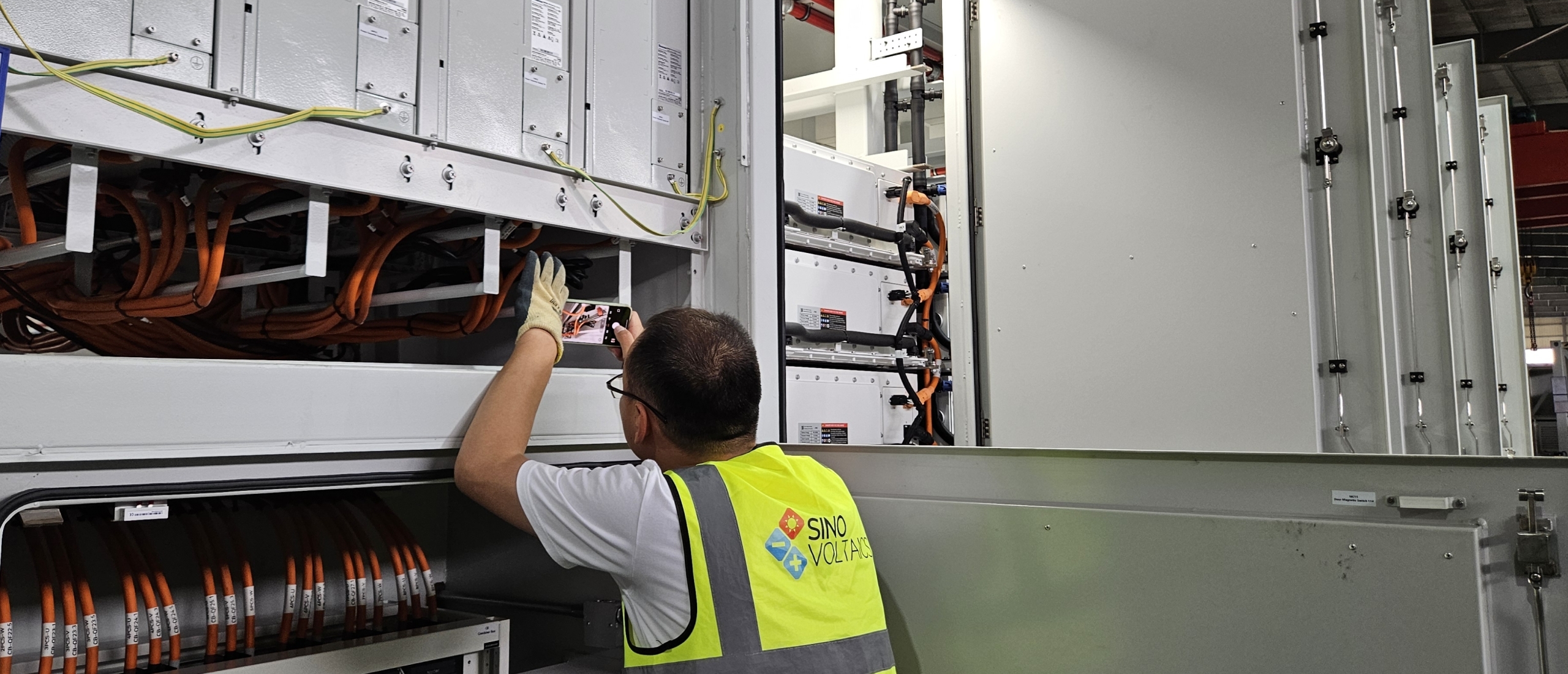
Factory Acceptance Testing (FAT Testing) for BESS: A Comprehensive Checklist
Introduction
Factory Acceptance Testing (FAT) is a critical step in the Battery Energy Storage System (BESS) procurement process, ensuring that the system meets technical specifications, safety standards, and performance requirements before shipment. FAT reduces risks, identifies potential issues, and confirms that the BESS is fully functional before installation.
This guide provides a detailed checklist for conducting a successful FAT for a high-quality and reliable BESS.
1. Pre-Test Preparations
Before conducting FAT, confirm the following:
• The Battery Energy System Solutions are fully assembled and integrated with all key components (battery modules, PCS, BMS, EMS).
• The supplier has provided all technical documentation, including:
o Datasheets and design specifications
o Factory test reports for individual components
o Certifications (UL 9540, IEC 62619, IEEE 1547, etc.)
• BESS Test procedures are clearly defined and agreed upon between the buyer and supplier. This is very important to include this as an annex in your contract to avoid last minute negotiation.
• Necessary testing equipment and instruments are available and calibrated. Calibration certificates should be available upon request.
Best Practice: An independent third-party inspector representing the buyer should be present to witness the tests.
2. Visual Inspection & Build Quality Verification
Before performing electrical and functional tests, conduct a thorough visual inspection to confirm the system is properly assembled and free of defects.
Enclosure & Structural Integrity
• No physical damage, dents, or corrosion on the BESS enclosure
• Paint and coatings are intact, with no visible rust or weak spots
• Proper labeling of battery modules, power cables, and connectors
• Enclosure meets ingress protection (IP) rating requirements (e.g., IP55 for outdoor units)
Battery Modules & Racks
• Battery modules are securely installed and properly connected
• Correct voltage and polarity markings on each battery module
• No loose, damaged, or corroded connections
Power Conversion System (PCS) & Electrical Components
• When directly integrated into the BESS, PCS (bidirectional inverters) are securely mounted and properly wired
• Circuit breakers, fuses, and protective devices are installed correctly
• Safety disconnect switches are functional and clearly labeled
Thermal Management & Safety Systems
• HVAC or liquid cooling system is installed and functional
• Fire suppression system is in place and meets regulatory standards
• Smoke, gas, and thermal sensors are properly installed and calibrated
Best Practice: Use a standardized inspection checklist to document findings and identify any necessary corrections.
3. Electrical & Functional Testing
The next step involves testing the electrical performance, safety features, and operational functionality of the BESS.
Battery System Testing
• Voltage & Capacity Test: Confirms total system voltage and energy capacity align with specifications
• Internal Resistance Test: Verifies electrical resistance of battery modules and ensures proper connectivity
• Insulation resistance: Perform insulation resistance test between live parts and enclosure to ensure dielectric integrity.
PCS & Inverter Testing
• Conversion Efficiency Test: Measures PCS efficiency (should be at least 98 percent)
• Grid Compliance Test: Ensures the system meets local grid compliance and international standard like UL 1741.
• Power Factor & Harmonic Distortion Test: Checks that power quality remains within acceptable limits
Battery Management System (BMS) Testing
• State of Charge (SoC) Accuracy Test: Confirms SoC readings align with actual battery levels
• Overcharge & Overdischarge Protection Test: Ensures BMS prevents unsafe battery conditions
• Cell Balancing Test: Verifies that the BMS properly balances voltage across all battery cells
Energy Management System (EMS) & Communication Test
• Remote Monitoring Functionality: Ensures real-time data collection and remote access
• SCADA/Modbus Integration Test: Confirms seamless communication with existing energy management systems
• Alarms & Alerts Test: Verifies proper triggering of fault warnings and safety alerts
Best Practice: Document all test results, noting any discrepancies or required adjustments.
4. Load & Performance Testing
The BESS must be tested under real operating conditions to confirm its ability to handle expected loads and discharge cycles.
Load Bank Test
• The system is connected to a simulated load bank to replicate real-world energy demand
• Performance is tested at various load levels (25%, 50%, 75%, 100%)
• The system maintains stable output voltage and current throughout testing
Charge & Discharge Cycle Test
• Full charge test: Measures energy required to charge the BESS to 100 percent
• Full discharge test: Confirms available long term energy storage aligns with specifications
• Round-trip efficiency measurement: Should meet the specified efficiency rating (e.g., 90 percent or higher)
Best Practice: The FAT Inspection test should be performed at full charging and discharging power.
Emergency Shutdown & Recovery Test
• The emergency shutdown system is triggered to simulate a fault condition
• The system must safely disconnect from the grid or load without voltage spikes
• Restart sequence test: Verifies the system can power back on smoothly after a shutdown
Best Practice: Conduct multiple charge/discharge cycles to detect potential degradation or performance issues.
5. Factory Acceptance Test (FAT) Report & Sign-Off
Once all tests are completed, the results must be documented in a Factory Acceptance Test (FAT) Report.
The FAT report should include:
• Test methodology and results for each performance parameter
• List of any detected defects or deviations from specifications
• Summary of corrective actions taken (if any)
• Final approval or rejection status
If the BESS passes all FAT tests, the customer provides a formal sign-off, authorizing shipment and delivery.
Best Practice: Require suppliers to include a warranty validation clause in the FAT report, ensuring that any failures detected post-installation are covered under warranty.
Conclusion
Factory Acceptance Testing (FAT) is an essential step in BESS quality assurance, ensuring that the system meets technical, performance, and safety standards before deployment. By following a structured FAT process, buyers can mitigate risks, prevent costly failures, and guarantee a reliable energy storage solution. At Sinovoltaics, we offer comprehensive BESS FAT monitoring services to help ensure your BESS meets the highest quality standards before it leaves the factory.
